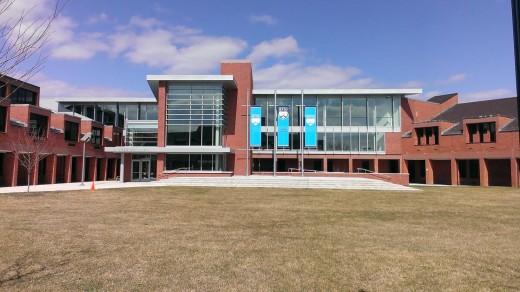Spotlight PA is an independent, nonpartisan, and nonprofit newsroom producing investigative and public-service journalism that holds power to account and drives positive change in Pennsylvania. Sign up for our free newsletters.
By Stephen Caruso | Spotlight PA

Pennsylvania lawmakers are entering into budget season with the joint goal of making it more affordable to attend college in the commonwealth. As with most issues in the Capitol, Democrats and Republicans have different ideas about how to do it.
The GOP majority in the state Senate is pitching new scholarships that target “in-demand” occupations and offer money in exchange for post-grads living in Pennsylvania.
Democratic Gov. Josh Shapiro has set his sights on Pennsylvania’s 10 state-run and 15 community colleges, pitching a major overhaul that would combine the two systems, boost funding, and eventually cap tuition at $1,000 per semester for many families.
Exactly what will end up in the budget due June 30 is unclear, though state Rep. Peter Schweyer (D., Lehigh), chair of the state House’s Education Committee, said lawmakers universally agree college should be more affordable.
“Budget season is always funny,” Schweyer told Spotlight PA. “I’m not going to make any predictions, but I don’t hate [state Senate Republicans’] ideas and there’s a lot of space we can work together.”
Shapiro has often noted that Pennsylvania ranks 49th out of 50 for direct state appropriations for higher education. Funding per full-time public college student started to decline in the early 2000s as enrollment increased. Funding then cratered during the Great Recession amid deep budget cuts as federal aid evaporated and state tax returns sagged.
This reduction can be seen across multiple budget lines, a Spotlight PA analysis shows. Lawmakers provided more than $500 million for the Pennsylvania State System of Higher Education in the 2008-09 budget before slashing it by almost $100 million. State funding for the system didn’t hit the $500 million mark again until 2022.
These decisions have led to tuition hikes, budget cuts, or both at schools across Pennsylvania. For PASSHE, it meant consolidating six schools into two in 2022.
Riley Bennett, a 20-year-old cybersecurity student, just finished his first year at Slippery Rock University, which is in the PASSHE system.
He chose Slippery Rock partially because tuition and fees were affordable at $22,000 a year. After scholarships and financial aid, he’s responsible for roughly $10,000 a year to attend, which he’s covering through loans and a job stocking shelves at a grocery store.
Still, he’ll exit school with between $20,000 to $40,000 in debt, which will require a delicate balancing act once he graduates, given rising costs for housing, utilities, and food.
“I feel like there’s a lot of stigmas around loans,” he said. “I’ve taken out loans, but I know people who haven’t gone to college out of fear of loans.”
Pennsylvania’s public colleges are some of the most expensive of their kind in the country; one estimate finds the state has the fifth most expensive public university system nationwide.
That number includes Lincoln, Penn State, Pitt, and Temple — semi-private entities that get public money every year — and a spokesperson for PASSHE said it has kept its overall price to students nearly flat since 2018.
By the time Shapiro took office last year, funding for Pennsylvania’s state universities had already begun to tick up slightly. Between former Gov. Tom Wolf’s last budget and Shapiro’s first, PASSHE’s annual line item increased by $110 million, up to $585 million for the budget year that will end on June 30.
In his second budget, Shapiro pitched a further increase, along with an ambitious structural overhaul to “ensure our new system is the most affordable pathway to a postsecondary credential or degree.”
“For the better part of the last decade, the conversations around higher ed in this building have been about subtraction. Subtracting resources. Subtracting services. Subtracting access,” Shapiro said in his February budget address. “We need to play a game of addition, not subtraction, and focus on building a world-class system of higher education.”
A March report from the administration noted that other states with similar unified systems allow students to transfer credits across the whole system (most community colleges currently participate in a system that allows students to transfer certain credits), provide a common application that can be used for all schools, and allow cross-registration in different schools.
To do this, Shapiro called for combining the state’s 10 publicly owned schools with its 15 community colleges into a single system under shared management, then increasing the state’s funding for the combined group by 15%.
Once the new structure is in place, Shapiro’s plan would cap tuition for the PASSHE schools and community colleges at $1,000 per semester for students from median-income families.
It would also increase the maximum grant per student from the Pennsylvania Higher Education Assistance Agency by $1,000.
State Senate Republicans rejected the restructuring out of hand.
“We’re not interested in merging bureaucracies to create more bureaucracies,” state Sen. Scott Martin (R., Lancaster) said at an April news conference. He is charged with crafting his caucus’ budget pitch as chair of the state Senate Appropriations Committee.
He and his colleagues proposed creating two new state-sponsored scholarships. Under one, in-state students would be eligible for up to $5,000 in grants per academic year that could be used at any Pennsylvania college or university. Under the other, out-of-state students with at least a 2.5 GPA would pay in-state tuition at PASSHE schools, a savings of anywhere between $2,000 to $4,000 yearly.
However, there are strings attached.
Both programs would be available to students for four years in “an approved course of study,” including “agriculture, computer science, business, education, engineering, nursing, criminal justice” or any other program that could lead to employment in an “in-demand occupation.”
The Pennsylvania Higher Education Assistance Agency would define “in-demand occupation” in consultation with the Independent Fiscal Office, the governor’s administration, and private industry.
Recipients would need to secure a job in Pennsylvania related to their studies within a year and keep it for 15 months per year they received the scholarship. If a graduate fails to abide by the terms, the grant converts to a loan, and they must pay it back with interest.
Bennett, the Slippery Rock student, told Spotlight PA he’d be happy to stay in Pennsylvania after graduation. However, his degree likely won’t get him a job in his native Williamsport. He’d prefer to be in a city such as Harrisburg, Philadelphia, or Pittsburgh, but his job search could easily take him across state lines.
“If I find a job out of state that is providing for me, even if it’s out of state, that would probably be the one I go for,” Bennett said.
The GOP proposal is similar to one that Wolf unsuccessfully pushed during his second term. The Democrat wanted to pay for it using a state fund that collects casino taxes for horse racing prizes, to the chagrin of the industry and its Republican allies in the legislature.
State Senate Republicans haven’t put a price tag on their proposal yet, according to Martin, who in April said the amount “is going to come down to the negotiating table.”
In a statement at the time, Shapiro spokesperson Manuel Bonder didn’t comment on the specifics of the GOP proposal, but said the administration was “glad legislators agree with Governor Shapiro that doing nothing is not an option.”
Ken Mash, president of the union representing faculty in the PASSHE system, credited Shapiro’s February budget address for getting the ball rolling.
“He has focused attention on higher ed like no governor in recent memory,” Mash told Spotlight PA, arguing Republicans felt compelled to respond to the governor’s February pitch with a plan of their own.
Mash also said that the state could think bigger than the programs proposed by either party. A plan long championed by the union would provide tuition-free college education at a PASSHE school to students from families making under $200,000 a year by covering any leftover costs after federal, state, and institutional support.
The plan, known as the PA Promise, has been sponsored by state Sen. Vincent Hughes of Philadelphia for years.
Hughes, Martin’s Democratic counterpart on the Senate Appropriations Committee, said he’s concerned that tightly worded qualifications for new financial aid programs could compound existing inequities in the state’s K-12 education system.
For instance, if a proposal incentivizes students to enter the life sciences, but a student’s high school doesn’t have a strong biology or statistics program, “you’re going to be left out,” Hughes said.
“Accessibility and affordability in higher ed has been a lurking problem for a long time,” Hughes told Spotlight PA.
His counterproposal’s price tag is high — an older version with a lower income threshold was priced at $1 billion a year. But with a $14 billion surplus, Hughes argued that “it would be a public and budgetary crime to not make strategic smart investments that can really move the needle.”
BEFORE YOU GO… If you learned something from this article, pay it forward and contribute to Spotlight PA at spotlightpa.org/donate. Spotlight PA is funded by foundations and readers like you who are committed to accountability journalism that gets results.








